The modern market of household appliances is characterized by a variety of different devices and their varieties. There are no exceptions, and ovens – electric and gas. The first of them are distinguished by a wide range of models. All devices are divided into types of installation options, dimensions and other characteristics. To choose a built-in electric oven, it is necessary to study several criteria for its evaluation.
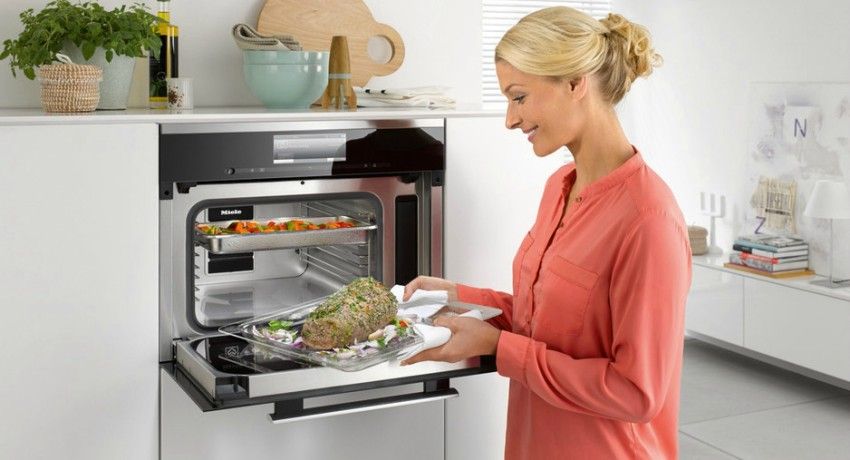
Advantages of electric recessed ovens
Ovens that use electricity as an energy source have many advantages that determine their popularity among home appliance buyers. One of the most significant advantages is the accuracy of heating. Gas counterparts are quite difficult to maintain the required temperature at a certain level.
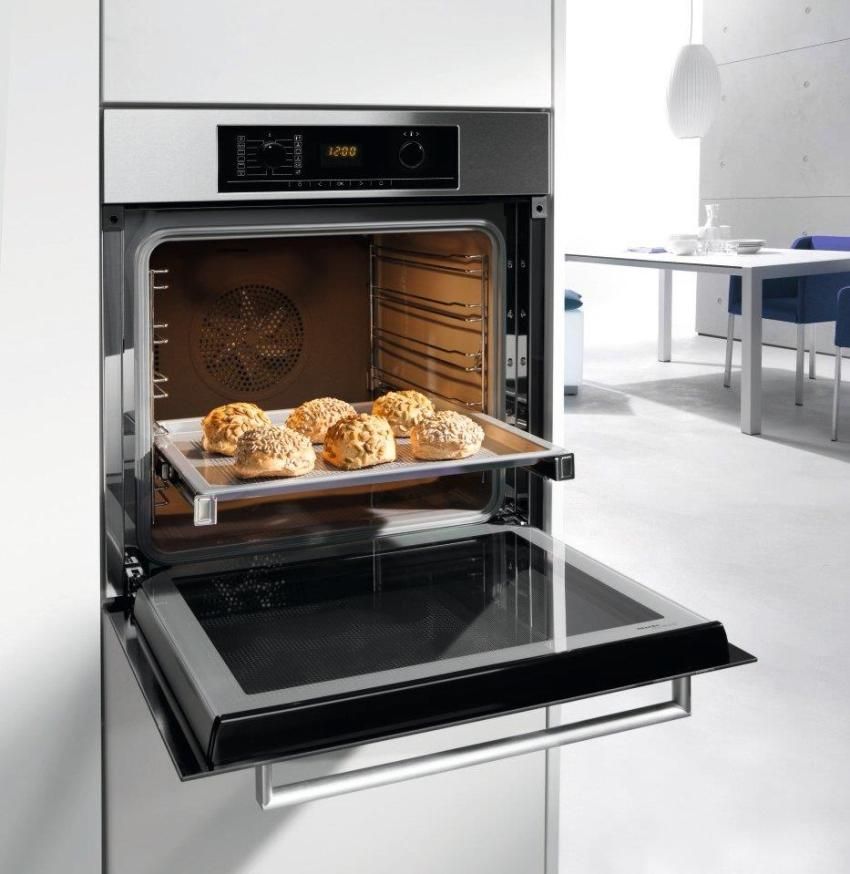
Another advantage of embedded electric ovens – warming up to the desired temperature is done very quickly. During the operation of such devices does not form any products of combustion. The temperature range of these models varies from 30 to 500 ° C.
Useful information! Separately, it should be said that the heating of the inner chamber in such devices is performed evenly, which allows you to cook various dishes with maximum efficiency.
Embedded devices have an advantage over free-standing. This type of model can be integrated into a kitchen set, which saves usable space. Integrated devices look the most concise in the interior of the kitchen. Experts recommend buying such an electric oven for small premises.
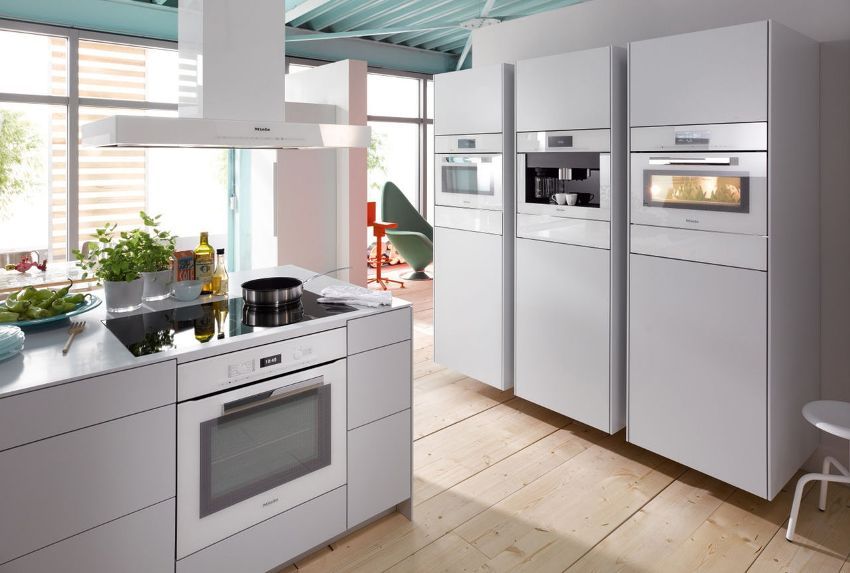
All ovens of the modern type are differentiated according to the type of carrier. Depending on this criterion, they are divided into electric and gas. What is the advantage of the first? It is necessary to remember that electric units are multifunctional. Virtually any device of this type includes an extensive list of programs.
As a rule, ovens are equipped with infrared heaters. More modern models are increasingly embedded induction elements. The price of ovens of this type is higher. It is also worth noting that in the event of a breakdown of such a unit, you will need to pay a rather large amount to make repairs.
The maximum temperature that electric varieties of ovens are able to regulate is 500 ° C. Different models are also classified according to their energy consumption. For example, the minimum figure in this case is 600, and the maximum – 1600 W / h. It is important to remember: before you buy an electric oven, you must take care of the organization of a separate electrical line for it. This is due to the fact that the minimum power of such units is 1 kW / h.
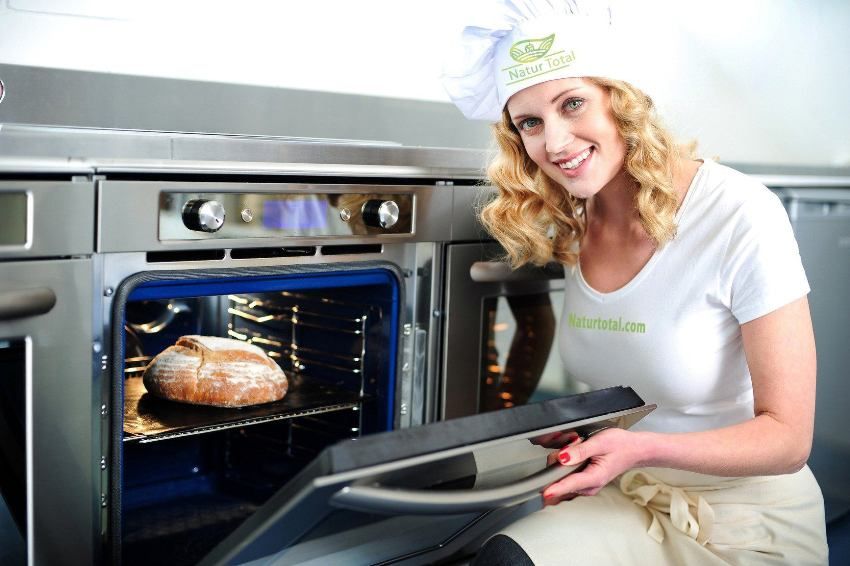
Useful information! As for the dimensions of electronic integrable models, they are the same as for gas devices. The capacity of these units ranges from 25 to 111 liters.
Among other advantages, electric ovens should be noted that they have a wide range of models, as well as are easy to install and operate. However, like any other device, the electric ovens have some drawbacks. Their main minus – high price.
Gas models are less technological and functional. They are unable to provide uniform heating of food during its preparation, which is considered a serious disadvantage. However, these devices are not so expensive.
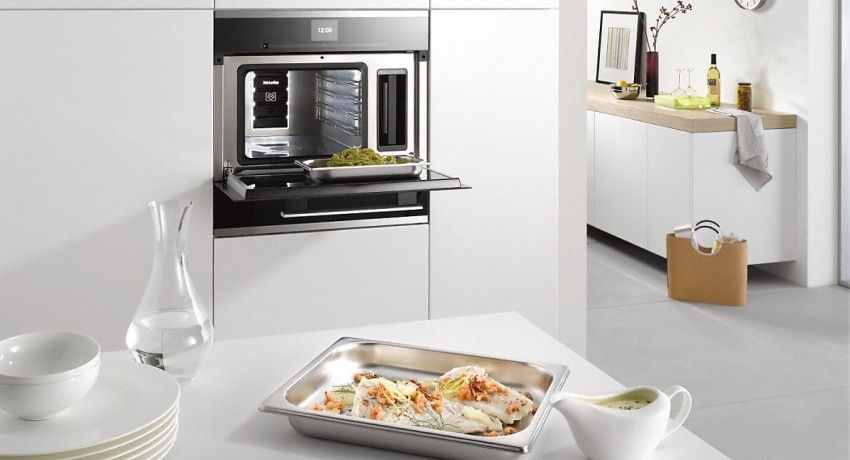
When choosing an electric oven, it is necessary to study the types of devices that can be found on the market today. All of these devices can be classified according to the type of control and location. There are these types of data devices:
- dependent;
- independent.
Dependent. Such a household appliance is connected to the hob and has a single control mechanism. The specifics of the installation of such a unit involves placing the cabinet under the hob. The oven and the cooking surface may not be combined.
Independent. In this case, the electric oven does not fit into the cooking surface. The adjustment of the independent type of operation is carried out separately, as it has its own control panel.
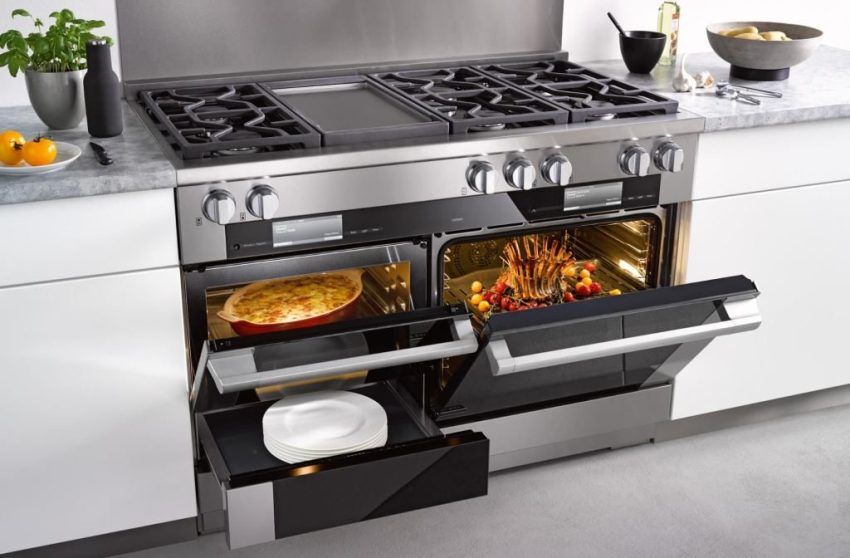
Today it is possible to meet the electroovens differing in a setup option. There are the following types of adjustment of the operation of these devices:
- electronic;
- mechanical;
- combined.
The first type is characterized by the presence of a touch panel, which includes all the necessary buttons and modes. Models controlled mechanically are cheaper and are equipped with buttons and handles. Combined units combine the features of both of the above options.
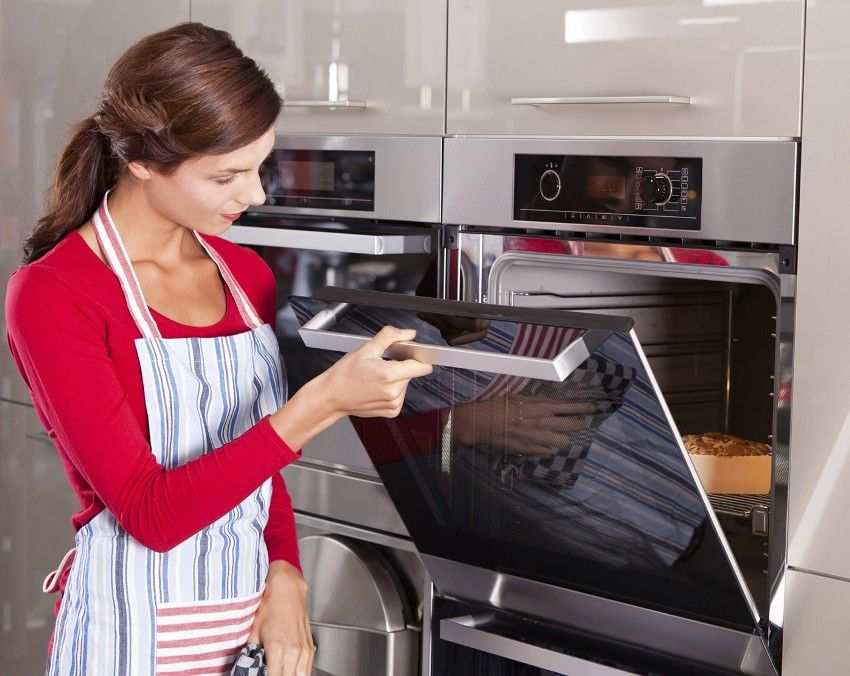
An important criterion for the choice of an electric oven is its dimensions. Integrated devices take up less space because they do not have their own case. All ovens of this type can be divided into three types, depending on the size:
- full size;
- narrow;
- compact.
The equipment belonging to the first group has a width of 60 cm and a similar height. Such units are suitable for use in spacious and medium-sized kitchens. For a small room it is recommended to choose a narrow model. The width of these devices is 45 cm. In turn, compact devices differ from other varieties in height. For example, the width of small electric ovens can be 60, and the height – 20 cm, which makes them similar to microwave ovens.
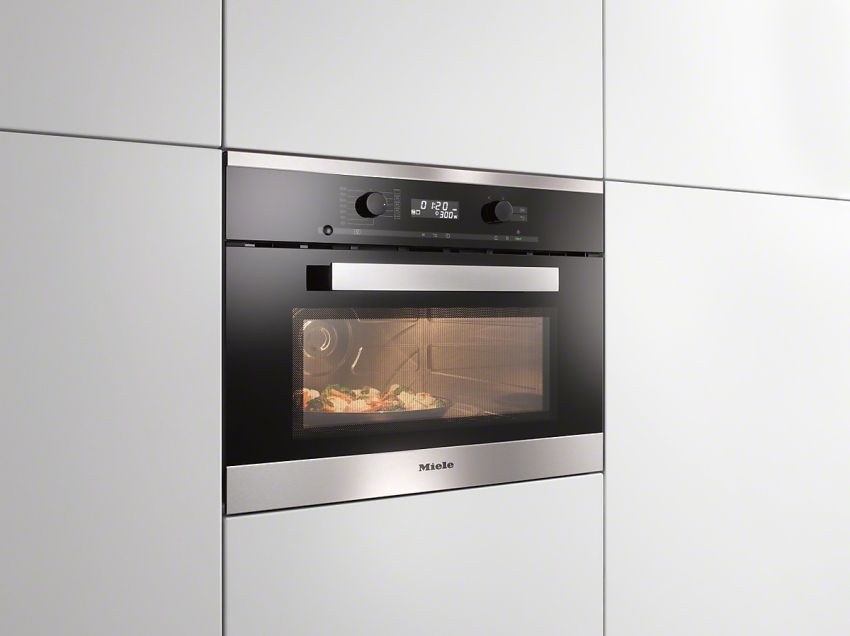
Before you buy an electric built-in oven, be sure to take measurements of the niche in which it will be installed. Some ovens have a width that exceeds the standard figure of 60 cm. For example, models with a width of 90 and a height of 45 cm are very popular.
Most families live in standard apartments, not differing in the abundance of free space. However, with the right approach, as well as the correct placement of furniture, it is possible to install electric ovens even in a limited space. When selecting the necessary unit, you should familiarize yourself with the rating of ovens and read reviews about individual models.
Note! Often, buyers of integrable electric ovens make a common mistake – install the units close to the walls of the niche. Experts strongly recommend not to do so. This is due to the fact that if the location is too close due to the high power of the device, the niche walls become very hot.

When integrating an electric oven in a cupboard cabinet, consider the space required for organizing ventilation gaps. Such channels, regardless of the size of the unit, are a necessity.
Built in electric oven 60 cm
Devices having such a width are usually categorized as full-size. Due to its size, this type of unit is able to accommodate a variety of dishes. The volume of the internal chamber of the full-size device ranges from 55 to 70 liters.
The food inside the electric cooker is cooked quickly, and it is heated evenly. This is due to the location of the heaters. When choosing a full-size device, you must take into account not only its dimensions, but also the amount of energy consumed.
Note! Today it will not be difficult to choose the right device that corresponds to the economical class. It is desirable that this indicator was not lower than A +.
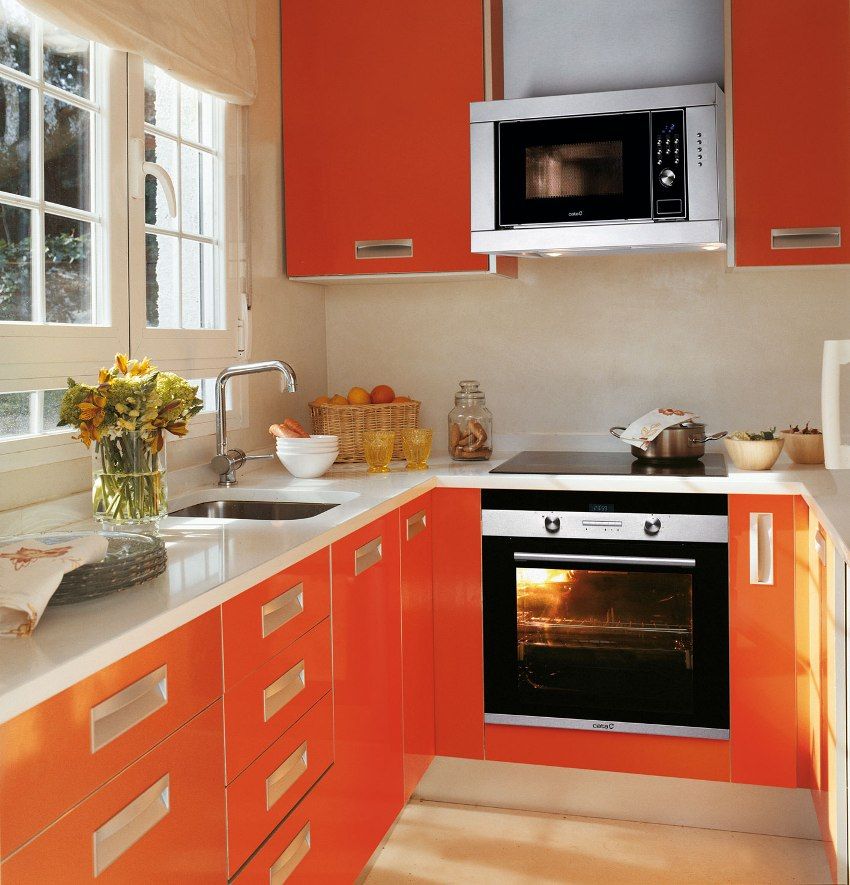
Before you buy a built-in electric oven with a width of 60 cm, it is recommended to measure the niche of the kitchen set in advance. These models are suitable for medium and spacious kitchen areas. Installation of 60 cm electric ovens is not difficult, however, to install such a device in a niche you should still contact a specialist.
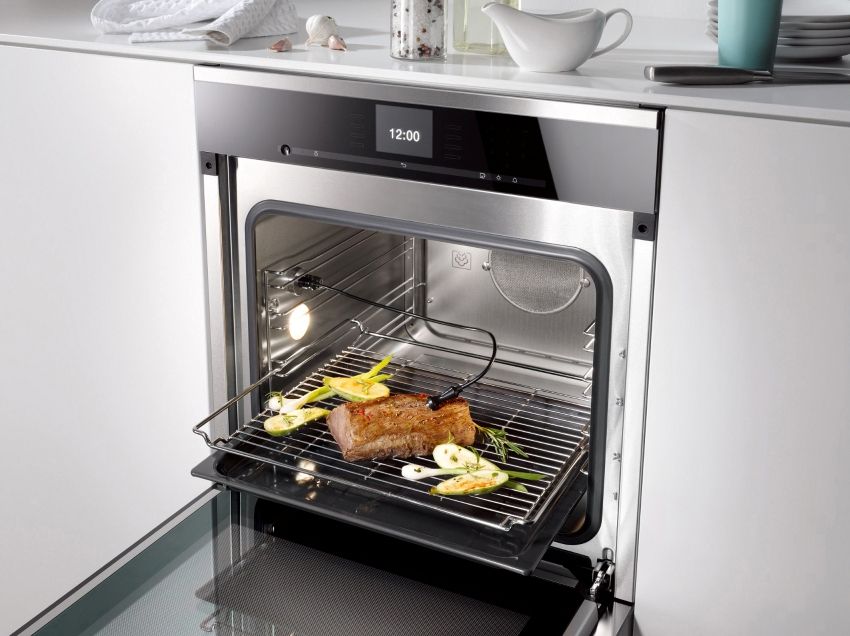
Built-in models of electrical appliances are the best solution for small-sized kitchens. The dimensions and features of the installation of devices of this type can save usable area of the room. When choosing a unit, you need to focus on several factors. The most important of them are the cost, size and feature set.

